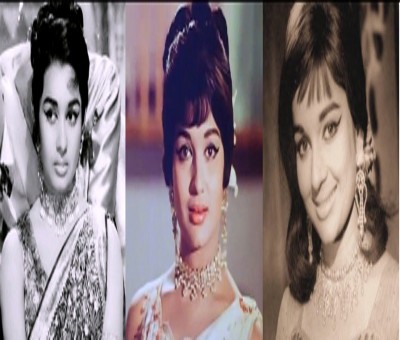
One of the few Hindi film stars to appear onscreen from a child to a dowager, Asha Parekh is the seventh woman -- out of a total of 52 awardees -- to be conferred the country's most important film honour, Dadasahab Phalke Award, since its inception in 1969.
She is also the second woman after Asha Bhosle to get the award since the dawn of the 2000s. Ironically, despite the limited representation of women in the roster of awardees, Devika Rani was the first to get it in 1969.
The other lucky women were Ruby Myers (Sulochana) in 1973, Kanan Devi (1976), Durga Khote (1983) and Lata Mangeshkar (1989). Asha Bhosle got the award in 2000.
Entering the film industry as a child artiste in 1952 when aged 10, Parekh worked in such roles for five more years, before concentrating on studies.
After a major disappointment when she was rejected for a big-ticket film (Vijay Bhatt's "Goonj Uthi Shehnai", 1959) as she was not "star material", she made her name in "Dil Deke Dekho" (1959), which was among the first of Shammi Kapoor from his swinging era.
Parekh became a favourite of film-maker Nasir Hussain, who went to cast her in six successful films across the next decade. from "Jab Pyar Kisi Se Hota Hai" (1961) to "Caravan" (1971).
Mostly portrayed as a glamorous, even tomboyish, figure, with some notable exceptions, Parekh not only became a leading actress -- among the highest paid of her time -- but also was a style icon with her choice of clothes and elegant coiffure.
She was cast in the same mould by filmmakers such as Vijay Anand and Mohan Segal, but Raj Khosla and then Shakti Samanta gave her more meaty roles that required her to emote more, and she performed.
Paired with most of the leading heroes of her time, Parekh will be particularly remembered for her onscreen chemistry with Shammi Kapoor, particularly in "Teesri Manzil" (1966), be it the energetic jiving in "Aaja aaja, main hoon pyar tera" or "O Haseena zulfonwali jaan-e-jahan", the heartfelt request in "O Mere Sona Re", or the smouldering emotional intensity on both sides of "Tumne mujhe dekha hokar meherbaan".
She was no less with Dev Anand in "Jab Pyar Kisi Se Hota Hai" (1961), especially when singing the sad version of "Jiya O", with which the hero had serenaded her perched atop a car driving next to her train.
And then who can forget Parekh donning the geisha costume in "Love in Tokyo" (1966) as she says "Sayonara" to Joy Mukherjee, or singing the soulful "Jab Chali Thandi Hawa" in "Do Badan" (1966), a love triangle with Manoj Kumar and Simi Garewal, or being serenaded by Shashi Kapoor in "Pyar Ka Mausam" (1969).
Some of Parekh's most memorable work was opposite Rajesh Khanna, especially in the neo-realistic "Baharon Ke Sapne" (1967), and more particularly, "Kati Patang" (1970), where she essays the challenging role of a jilted woman living under an assumed identity, but with the sordid past racing to catch up with her.
"Yeh Shaam Mastani", "Pyar Deewana Hota Hai" and "Yeh Jo Mohabbat Hai" capture Rajesh Khanna in an ebullient mood, but Parekh's "Na Koi Umang Hai" is an apt portrayal of her character's plight. Not surprisingly, her acting fetched her the Filmfare Award for Acting.
By the middle of the 1970s, a new crop of actresses was emerging and Parekh had to move to doing character roles -- she played Amitabh Bachchan's sister-in-law in "Kaalia" (1981) -- but she admitted later that she did not enjoy them much and slowly began restricting her appearances.
Still, she did not fade away entirely and was seen till the mid-1990s when she decided to concentrate more on her avatar as TV producer.


.jpeg)

